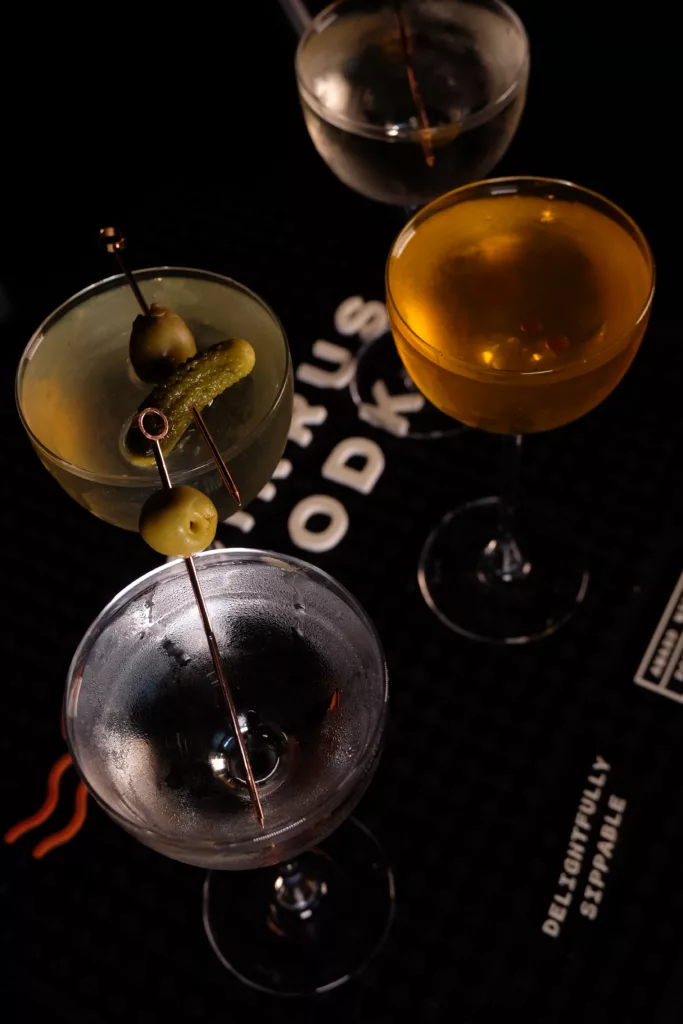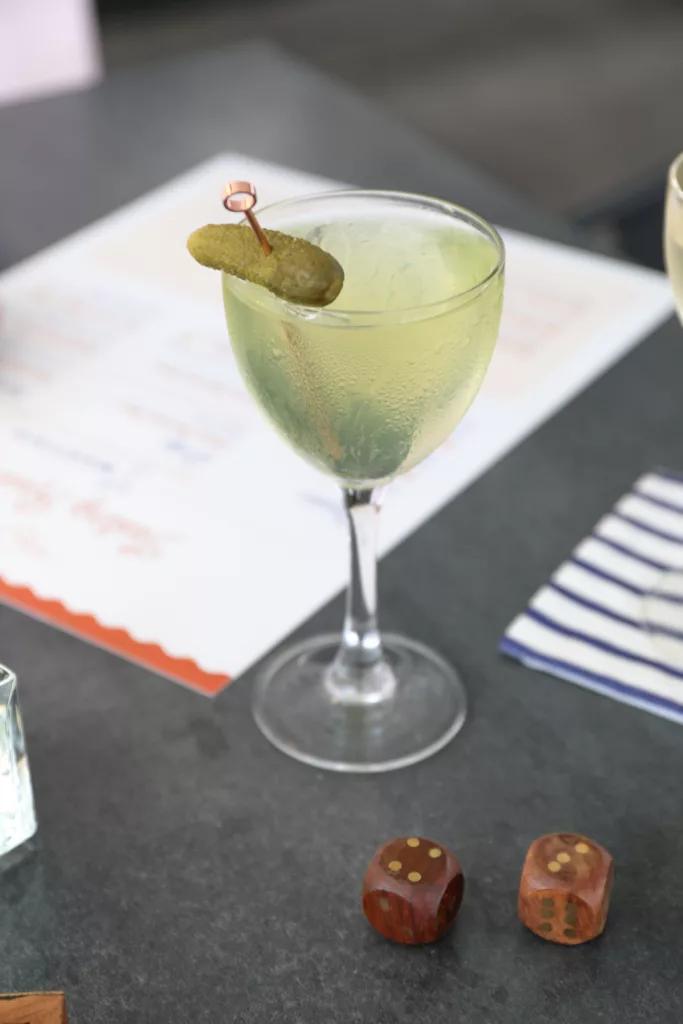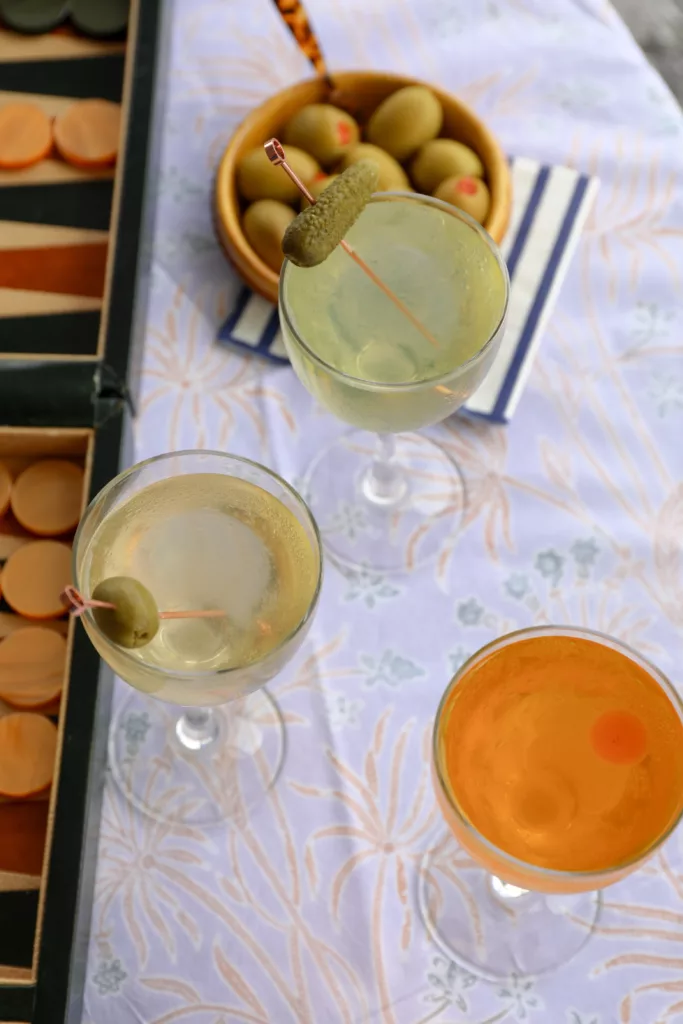After espresso martinis took over cocktail menus and social media last year, many non-mixology scholars were left wondering: what, exactly, is a martini? Sipping on the creamy, coffee-forward drink with its adorable three-bean hat, it’s easy to forget that martinis, traditionally, are transparent, boozy, and feature a very different flavor profile.
Despite its Italian-sounding name, the martini is a thoroughly American invention. Like any iconic creation, its origin story has many versions—but most agree its name and inspiration come from the town of Martinez, California. The Martinez cocktail of the late 1800s involved a few more ingredients like bitters. Since then, it’s been a smashing global success.
A martini is one of the simplest cocktails you can make—though its variations offer wonderful twists. It only takes three ingredients:
Classic Martini
2½ ounces gin, chilled for at least six hours
½ ounce dry vermouth
Twist of lemon
Set a martini glass in the fridge to chill. Pour gin and vermouth into a mixing glass, add cubed ice, and stir for about 30 seconds until well chilled. Strain into your chilled glass. Rub the lemon twist around the rim, then drop it in as a garnish.
From here, you can dress up martinis with varying alterations.
Cirrus Vodka loves martinis so much they revamped their cocktail menu, introducing nine martinis to their new tasting room, which opened in April in Richmond’s Scott’s Addition neighborhood. Click here to learn more!



What’s in a Pour?
Too scared to order a martini for fear of getting the terminology wrong? Here’s your guide to decoding that classy yet cryptic verbiage:
Vodka martini: A martini without a liquor identifier will always be gin. If you prefer vodka, you must specify.
Martini straight up: The ice used to mix the drink is strained out. The alternative is “on the rocks”—served
over ice.
Martini with a twist: Refers to the garnish—a lemon peel twist. Another common option is “with an olive.”
Dry martini: Uses less vermouth, making the drink stronger and less sweet. Like wine, “dry” is the opposite
of “sweet.”
Wet martini: Sweeter than the norm, with more vermouth—often it’s a 3:1 gin-to-vermouth ratio rather than 5:1, giving it a vermouth-forward flavor profile.
Naked martini: Contains no vermouth at all—just chilled gin or vodka and a garnish.
Dirty martini: A classic martini with a splash of olive brine added, either with or in place of the vermouth.
Perfect martini: A 2:1:1 ratio of gin to dry vermouth and sweet vermouth. The addition of sweet vermouth makes it a bit friendlier for martini beginners.

Gather & Hem in downtown Richmond delivers more-tini with their decked out, four-tiered martini tree of either classic or seasonally inspired martinis. GatherAndHem.com

Twist & Shout
If a martini is just gin, vermouth, and a garnish, why have you seen so many elaborate versions with chocolate, Baileys, syrups, and candies? While some bars make modest tweaks with a splash of unexpected brine or juice, others take “twist” to the extreme. The term “martini” (or the suffix “-tini”) now gets attached to just about any cocktail or mocktail served in a martini glass—often dessert drinks that take advantage of the glass’ wide rim for sugary embellishments.
Virginia bartenders are leaning into the chance to shake up the meaning of martini.


The Cavalier Espresso Martini—a true classic—from the Raleigh Room, the Cavalier Resort’s cocktail lounge in Virginia Beach. It’s everything a non-martini martini should be—a balance of bitter and sweet, made with vanilla-infused Ava Vodka, Tarnished Truth bourbon crème, Belle Isle coffee moonshine, fresh espresso, and Kahlùa.
This article originally appeared in the June 2025 issue.









